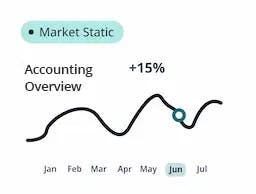
Admin
2024-01-16

Efficient inventory control is crucial for businesses to meet customer demands, minimize carrying costs, and optimize operational efficiency. Two commonly used inventory control methods are Just-in-Time (JIT) and Safety Stock. In this blog post, we will delve into these approaches, highlighting their characteristics, advantages, and considerations to help businesses make informed decisions about their inventory management strategies. Just-in-Time Vs Safety Stock Inventory.
Contact us?
Just-in-Time (JIT) Inventory Control
Just-in-Time (JIT) is an inventory control method that aims to minimize inventory levels by synchronizing production and procurement with customer demand. Here are key features and benefits of implementing JIT:
a) Lean Inventory: JIT focuses on reducing inventory levels to the bare minimum necessary for uninterrupted operations. By minimizing excess stock, businesses can save on carrying costs, storage space, and the risk of obsolete inventory.
b) Demand-Driven Approach: JIT relies on accurate demand forecasting and tight coordination with suppliers to ensure that materials and products arrive just in time for production or delivery. This helps avoid overproduction, excess inventory, and associated costs.
c) Cost Reduction: By maintaining lean inventory levels, businesses can optimize cash flow, reduce storage costs, and mitigate the risk of inventory obsolescence. JIT also minimizes the need for large warehouses or storage facilities, leading to cost savings.
d) Enhanced Efficiency: JIT improves production efficiency by eliminating waste, streamlining processes, and reducing lead times. It promotes a smooth flow of materials and products throughout the supply chain, reducing bottlenecks and enhancing overall operational efficiency.
Considerations for JIT Implementation
- Reliable Supply Chain: JIT requires a reliable and responsive supply chain with trusted suppliers capable of delivering materials and products on time.
- Accurate Demand Forecasting: Accurate demand forecasting is critical to avoid stockouts or disruptions in production due to insufficient inventory levels.
- Risk Management: JIT leaves little room for error, so businesses must have contingency plans in place to address unexpected disruptions, such as supplier delays or sudden spikes in demand.
Safety Stock is an inventory control method that involves maintaining a buffer stock to mitigate uncertainties in demand and supply. Here are key features and benefits of implementing the Safety Stock approach:
a) Risk Mitigation: Safety Stock acts as a buffer to absorb uncertainties in customer demand, supplier lead times, and production variability. It helps businesses avoid stockouts and maintain a high level of customer service.
b) Supply Chain Resilience: By keeping extra stock on hand, businesses can better manage supply chain disruptions, such as unexpected delays or quality issues with suppliers. Safety Stock provides a cushion to maintain operations during unforeseen circumstances.
c) Improved Customer Satisfaction: Safety Stock ensures product availability, reducing the risk of backorders or delayed deliveries. This helps businesses meet customer expectations and build stronger relationships.
d) Seasonal Demand and Fluctuations: Safety Stock is particularly beneficial for businesses facing seasonal demand patterns or uncertain market conditions. It allows for better preparation to meet peak demand without incurring stockouts.
Considerations for Safety Stock Implementation
- Demand Variability: Safety Stock should be based on accurate analysis of demand variability, taking into account factors such as seasonality, market trends, and customer preferences.
- Carrying Costs: Holding excess inventory as Safety Stock incurs carrying costs, including storage, insurance, and depreciation. Businesses must carefully assess the trade-off between holding costs and the risks associated with stockouts.
- Inventory Visibility: Accurate inventory tracking and real-time visibility are crucial for managing Safety Stock effectively. Implementing robust inventory management systems and technology can help optimize inventory control.
Conclusion:
Both Just-in-Time (JIT) and Safety Stock approaches offer distinct advantages in inventory control. JIT focuses on lean inventory and tight synchronization with demand, reducing carrying costs and improving operational efficiency. On the other hand, Safety Stock provides a safety net to mitigate uncertainties, ensuring product availability and customer satisfaction. Businesses must carefully evaluate their unique needs, demand patterns, and supply chain dynamics to determine the most suitable inventory control method or a combination thereof. By implementing the appropriate approach, businesses in the UAE can strike a balance between inventory optimization, cost management, and customer service levels for long-term success.
Latest News
From Our blog and Event fanpage




